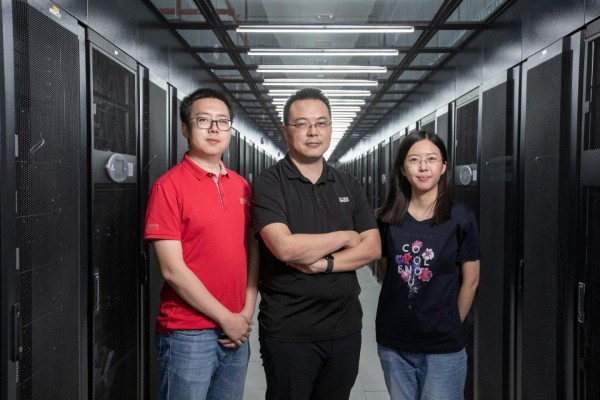Scientists use prenatal testing samples to complete the largest genetic study yet in China

Researchers have sequenced the genomes of over 140,000 women in China, the largest-scale genetic analysis of Chinese people to date, using data from non-invasive prenatal testing (NIPT) to assemble a representative sample of the whole population. The proof-of-concept analysis, still underway, could reveal new information about migration patterns, traits under selective pressure, and disease risk in Chinese populations. The work, from BGI-Shenzhen, appears October 4 in the journal Cell.
In the past, it has been prohibitively expensive to sequence enough people's DNA to study the genetic makeup of the large Chinese population. While studies of tens of thousands of individuals have been done, getting data from hundreds of thousands or millions of people has not been possible.
Meanwhile, NIPT--a test that sequences small amounts of a mother's cell-free DNA to screen for fetal trisomy--has been growing in popularity. It has been administered to approximately 6 to 7 million Chinese women and an estimated 10 million women worldwide.
"Even in the beginning of this clinical testing, we were already trying to see how we could use this kind of opportunity. Although non-invasive prenatal testing is low-pass sequencing, capturing approximately 6%-10% of the whole genome randomly, there's still a chance that using this data with a large population size will help us to have a much broader vision of what the Chinese genetic population looks like. NIPT is such a unique opportunity for us to access a large population size," says co-senior author Xun Xu of BGI-Shenzhen, a genome sequencing center based in China.
The current study looks at 141,431 participants from 31 of the 34 administrative provinces of China and comprising 36 of China's 55 ethnic minority groups. "We're excited about the volume: our participants represent 1/10,000 of the Chinese population, so it really is large sampling and a good reflection of the entire population," says co-senior author Xin Jin of BGI-Shenzhen and South China University of Technology.
There are some limitations to the data: it can't tell us much about the individual and there is about 20% of the genome where there aren't enough data to do analyses. But previous research had suggested that given a fixed budget, low-pass genome sequencing from many individuals could actually say more about a population than more thorough sequencing data from a smaller group. And the researchers believe that their data support that principle.
Their proof-of-concept analyses allowed them to identify patterns in the evolutionary history of China's different ethnic groups, to pinpoint novel genetic loci linked to phenotypes like height and BMI, and to identify viral DNA distributions specific to the Chinese genome. "We found that this really works. We can study specific phenotypes of disease at huge volumes. We can better understand the Chinese population history," says Jin.
As NIPT gains popularity, the researchers also believe it represents an unparalleled opportunity to examine more diverse phenotypes, compare the genomes of different populations, and better understand disease epidemiology. "We show that we can solve many classical population genetic and medical problems by analyzing NIPT data. As the testing is going to be undertaken by millions worldwide, it's more and more important to establish collaborations so that it is more possible to obtain the informed consent of patients and to properly manage medical records," says first author Siyang Liu, a senior research scientist in BGI-Shenzhen.
"For me, this is a very exciting new model for biology research," says Xu. "It provides powerful tools and a platform for future study. Here, we show proof of concept that these data, and the structure and the methods, could be used to study a lot of things. It's just the beginning."
Oct 05, 2018 02:42 PM EDT





